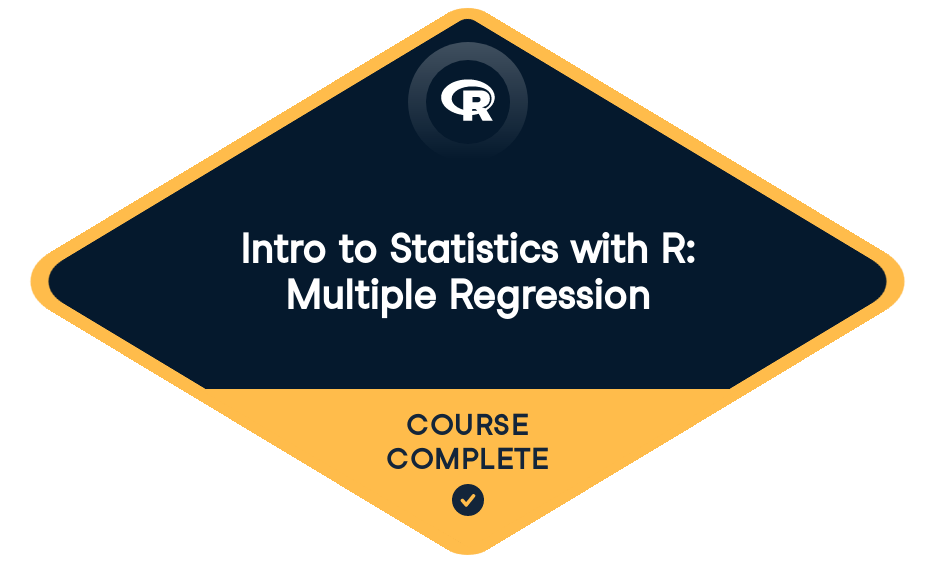Harun Gok has completed
Intro to Statistics with R: Multiple Regression
Start course For Free3 hr
2,400 XP

Loved by learners at thousands of companies
Course Description
Multiple regression is a powerful statistical technique, and here you will discover why and how to use it. Part of the course will focus on matrix algebra since it is essential if you want to start estimating regression coefficients in the regression equation. The final chapter will introduce dummy coding as a technique to handle categorical variables.
Training 2 or more people?
Get your team access to the full DataCamp platform, including all the features.- 1
A gentle introduction to the principles of multiple regression
FreeThe first chapter of the module will start with introducing the multiple regression equation, and the multiple correlation coefficient. You will visualize relationships between variables, and learn how to interpret the outcomes of the model.
A gentle introduction to the principles of multiple regression50 xpMultiple regression: starting off50 xpMultiple regression: visualization of the relationships100 xpMultiple regression: model selection100 xpMultiple regression: beware of redundancy100 xpMultiple regression: interpretation50 xpMultiple regression: interpretation regression constants50 xpMultiple regression: interpretation regression coefficients50 xpMultiple regression: strongest predictor variable50 xp - 2
Intuition behind estimation of multiple regression coefficients
FreeThis chapter is especially for those that haven’t done matrix algebra before, or for those that need to do a quick refresh on it. If you want to have a basic understanding on how the regression coefficients are estimated all at once in a multiple regression, you need matrix algebra. Step-by-step this chapter will show you how you go in R from a raw matrix data frame to the correlation matrix and the corresponding regression coefficients.
Definition of matrices100 xpAddition, subtraction and multiplication of matrices100 xpWhich matrices might be multiplied?50 xpCorrelation matrix of a raw dataframe50 xpRow vector of sums100 xpRow vector of means and matrix of means100 xpMatrix of deviation scores100 xpSum of squares and sum of cross products matrix100 xpCalculating the correlation matrix100 xpEstimation of regression coefficients50 xp - 3
Dummy coding
FreeDummy coding is used to code categorical variables in a regression analysis. Furthermore, dummy coding will also play an important role once you start doing more complex multiple regression analysis like in moderation (module 7). Conceptually, this chapter is not that hard, but dummy coding can become tedious and you have to be careful not to get tricked when doing your analysis. This chapter will show you how to avoid the most common traps.
An introduction to dummy coding50 xpStarting off100 xpCreating dummy variables (1)100 xpDummy variables in multiple regressions50 xpCreating dummy variables (2)100 xpModel selection: ANOVA100 xpModel selection: interpretation50 xpDiscrepancy between actual and predicted means100 xpDiscrepancy between actual and predicted means: get intuitive!50 xpAn introduction to effects coding50 xpUnweighted effects coding100 xpWeighted effects coding100 xp
Training 2 or more people?
Get your team access to the full DataCamp platform, including all the features.Join over 18 million learners and start Intro to Statistics with R: Multiple Regression today!
Create Your Free Account
or
By continuing, you accept our Terms of Use, our Privacy Policy and that your data is stored in the USA.